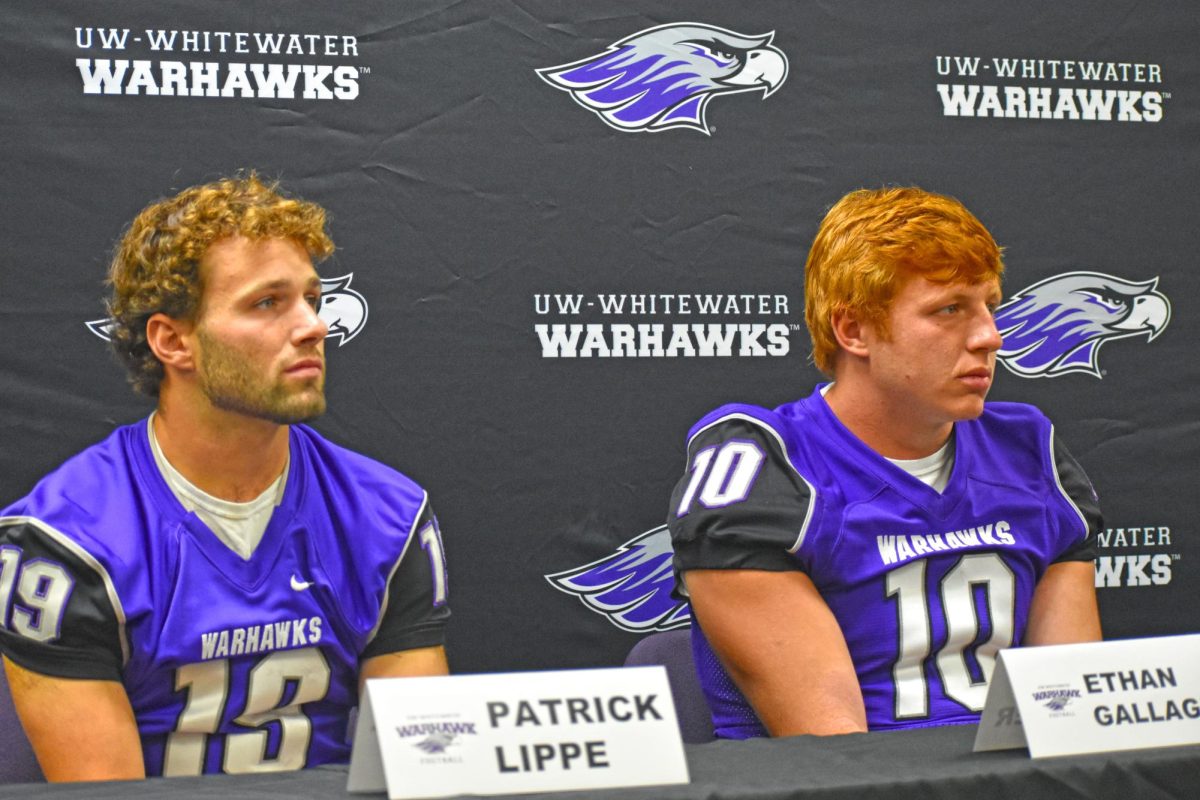The Wisconsin Intercollegiate Athletic Conference is widely regarded as the premier football conference in NCAA Division III athletics. But why are a group of schools in the middle of Wisconsin collectively so dominant in DIII football?
The WIAC, made up of eight University of Wisconsin campuses, has a long history of football excellence. Schools like the University of Wisconsin-Whitewater and the University of Wisconsin-La Crosse have built national reputations through decades of success, combining disciplined coaching, top-tier facilities and deep rivalries that fuel competition year after year.
However, it’s not only those two schools that give the WIAC its reputation. Head football coach Jace Rindahl knows the conference better than almost anyone, having experienced it as a player, graduate assistant, assistant coach and now head coach. He says the balance of power shifts constantly.
“My junior year of college, Eau Claire went to the playoffs,” Rindahl said. “My senior year of college, Stevens Point beat us and we tied for conference that year.”
That balance gives the WIAC a distinct advantage. UW-W, UW-LC, UW-Platteville and UW-Oshkosh have all made the playoffs in the last 10 years, and no team in the conference has never made the playoffs. As for consistency, Whitewater has reached the postseason 16 times in the last 20 years.
There are also few in-state alternatives for WIAC programs to play. Unless they convinced DI UW-Madison to suit up against them, no other Wisconsin school fields a football team outside Division III. The state has only one DI program and no DII schools, giving WIAC programs an edge in recruiting.
“Whitewater has a distinct advantage in recruiting based on location,” athletic director Ryan Callahan said. “We have eight million people within a two-hour drive with Madison, Milwaukee and Chicago. Illinois has some really good football, but if those players aren’t quite Big Ten caliber, what’s their next best option? Come here.”
“I’d say there are a lot of talented football players in Wisconsin who want to play competitive football and stay close to home,” senior wide receiver Patrick Lippe said. “It’s a great combination of playing good football, getting a really good education and staying connected to home.”
Along with football excellence, the WIAC also offers affordable education, averaging between $9,500 and $10,000 per year for in-state tuition. The schools also specialize in niche majors, attracting students who want both academic value and athletic opportunity.

“If you want to be in business, accounting or finance, you’re going to come to Whitewater,” Callahan said. “If you want engineering, you’ll go to Platteville. Nursing for Eau Claire. Construction management for Stout. That kind of sets us apart from what you’d call a traditional liberal arts college.”
Callahan also praised the strong relationship between athletics and academics at Whitewater.
“In 2019, my first year, we went to the Stagg Bowl, the Division III national championship, and that fell right during first-semester exams,” Callahan said. “I didn’t have one issue from a professor about an athlete missing their exam, and we sent 70 kids to the Stagg Bowl.”
Rivalries in the WIAC aren’t just about wins, they are about pride. Whether it’s Whitewater and La Crosse battling for a conference championship, or Stout and Stevens Point fighting to upset a ranked team, the emotion and energy make every Saturday feel like a championship game. That intensity drives players to perform at their best.
It is not just the atmosphere on the field, the crowds play a major role too. Whitewater holds the DIII attendance record with more than 21,000 fans, and drew another 20,000 just last week against La Crosse. Even beyond the top teams, the fan support runs deep: that same weekend, Eau Claire and Stout, neither leading the conference, brought in over 9,000 spectators.
The WIAC’s dominance isn’t just a regional story, it’s a national one. Since 2005, WIAC schools have appeared in the DIII national championship game more than a dozen times, with UW-W alone claiming six national titles. That level of success has made the WIAC the gold standard for Division III football, where the road to the Stagg Bowl almost always runs through Wisconsin.


